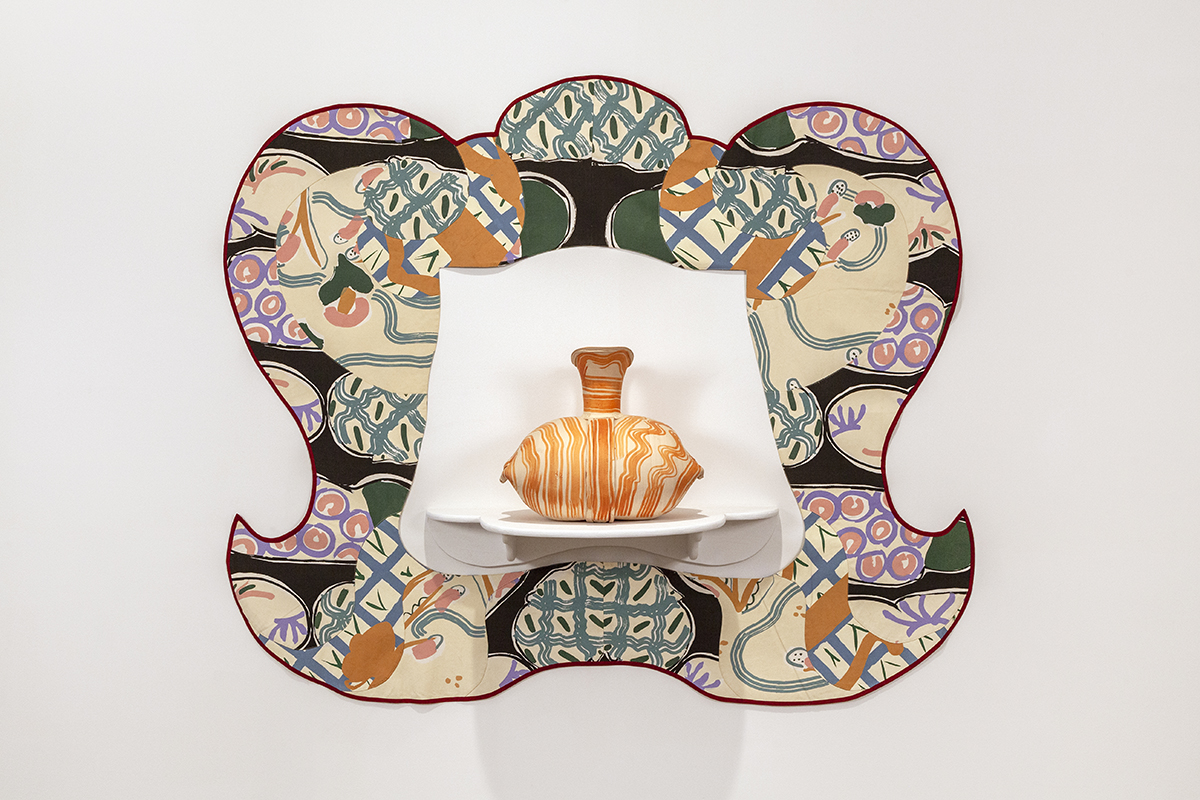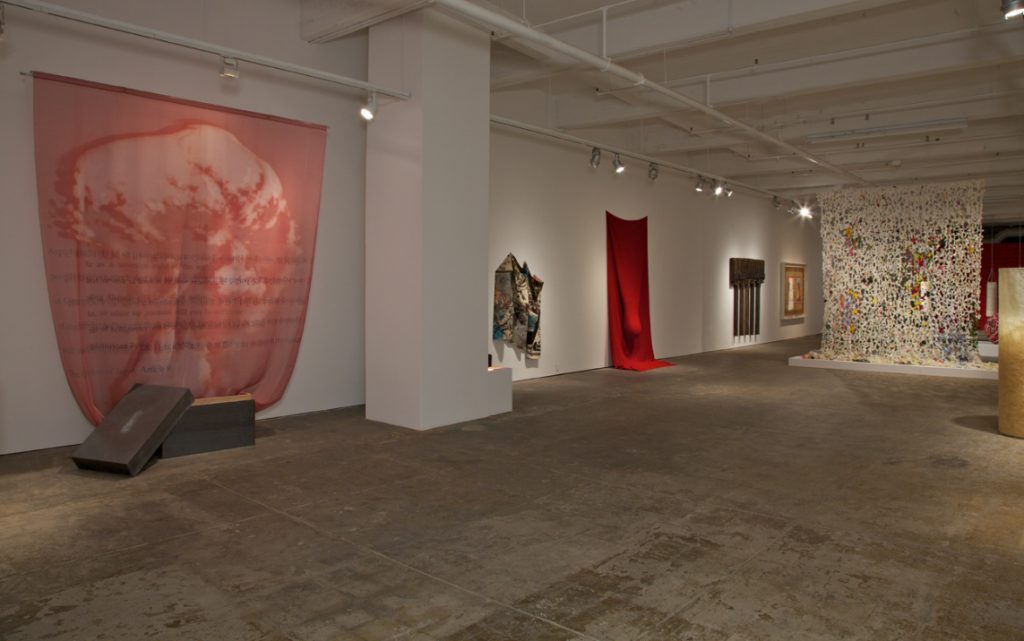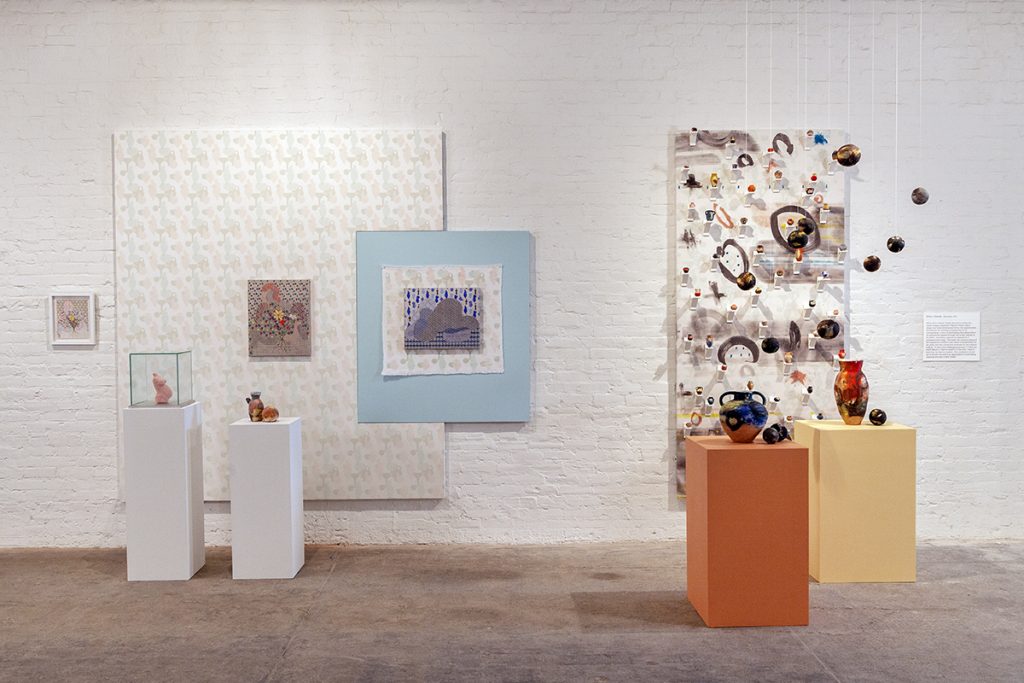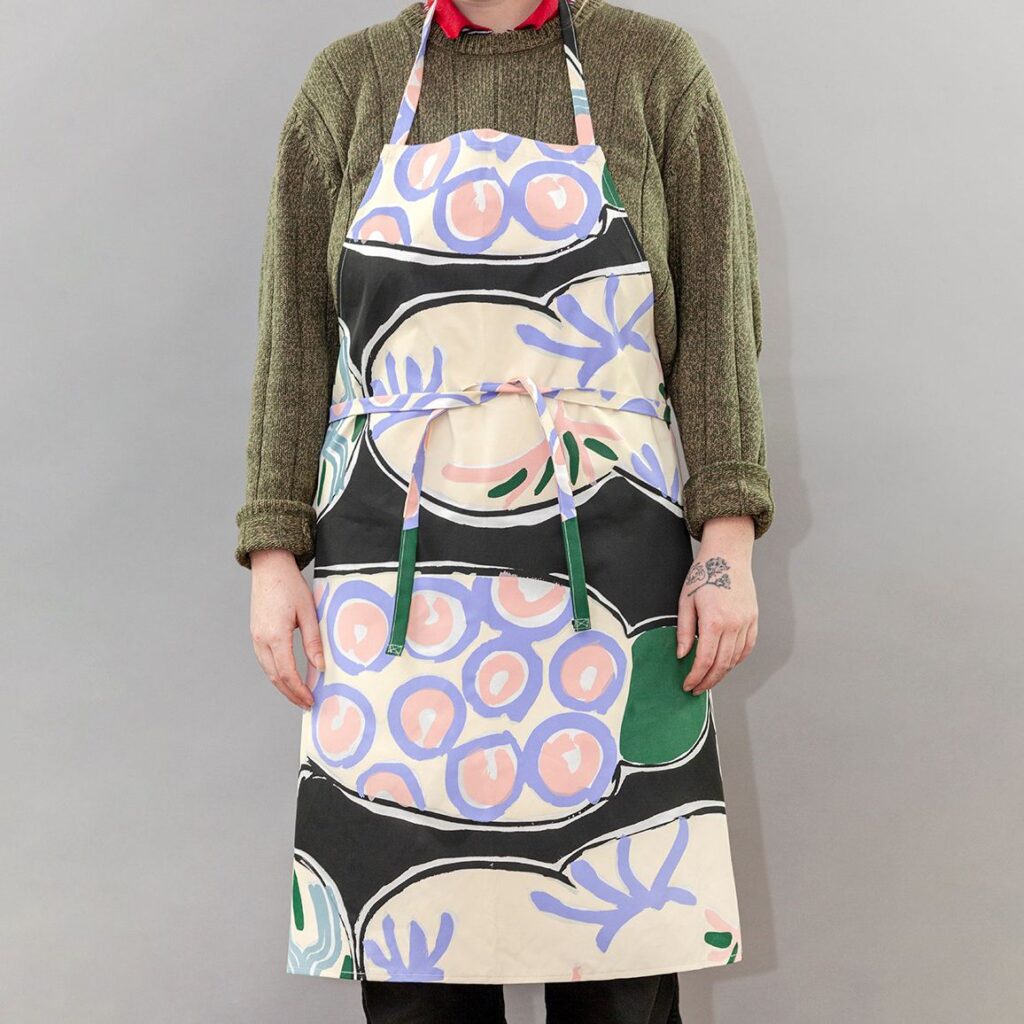Betty Woodman is internationally recognized as one of the most important contemporary ceramic artists. Through her inventive use of color and form, and her expert blend of a wide range of influences, she created exuberant and captivating ceramic sculpture. She used the motif of the container repeatedly, allowing it to enrich her exploration of formal and painterly traditions by employing many forms, from fragmented wall vases to bronze benches and pillow pitchers.
In 1980, Woodman worked alongside FWM Studio staff to create two brightly patterned fabrics, Window and Turandot Doorway, cut and pieced together using three screenprinted repeat patterns: Floating Pots, Platters, and Meandering Streams. Acting as ornate forms of framing for her ceramics and a doorway, respectively, these wall-hung works make the case for close-looking and finding beauty in the details. In many ways, this collaboration marked the end of the artist’s time working in production pottery and a distinctive turn towards sculpture, as she began to shift her attention to creating works that provided a sense of joy, beauty, and exuberance. In these works, one can see familiar hints of vases, frescoes, or architectural details, and yet, their function now is to please the eye while challenging perceptions of space.
In 1985, Betty Woodman, along with her good friend and master caterer Daniel Mattrocce, reunited with FWM a second time to create a dinner party in a New York City apartment. Entitled Presenting Food, the event reimagined function while celebrating the abundant artfulness of a meal. The napkin holder in the table setting is widely seen as the last functional object made by Woodman. Part celebration and part performance, this participatory piece would usher in another new way of working for the venerable artist.
Woodman’s final collaboration with FWM was in 2006, when she released an edition of 300 screenprinted handbags in conjunction with the Metropolitan Museum of Art’s major retrospective of her work, The Art of Betty Woodman. The bags featured abstract images of classical vases related to her illustrations at the time. Drawing no boundaries between traditions of fine art and craft, Woodman took elements from the rich heritage of each to make them her own.
Deepening her relationship with FWM, Woodman also served on the Museum’s Artist Advisory Committee for a number of years as a longstanding champion of the Artist-in-Residence program.







